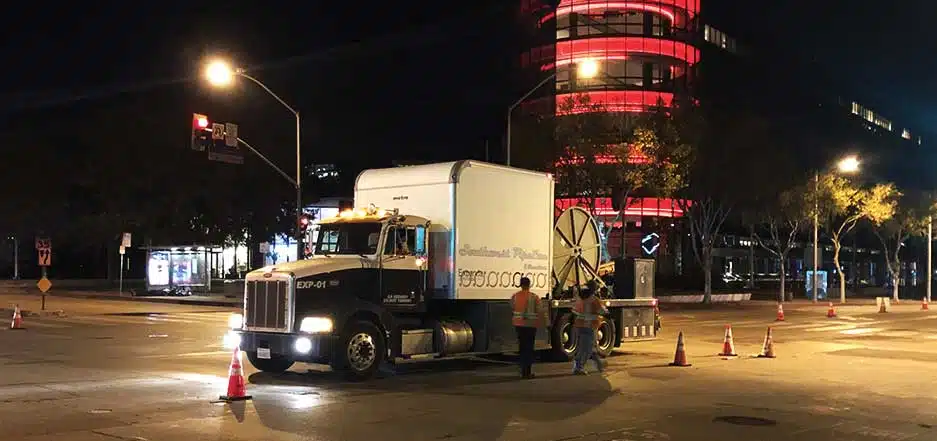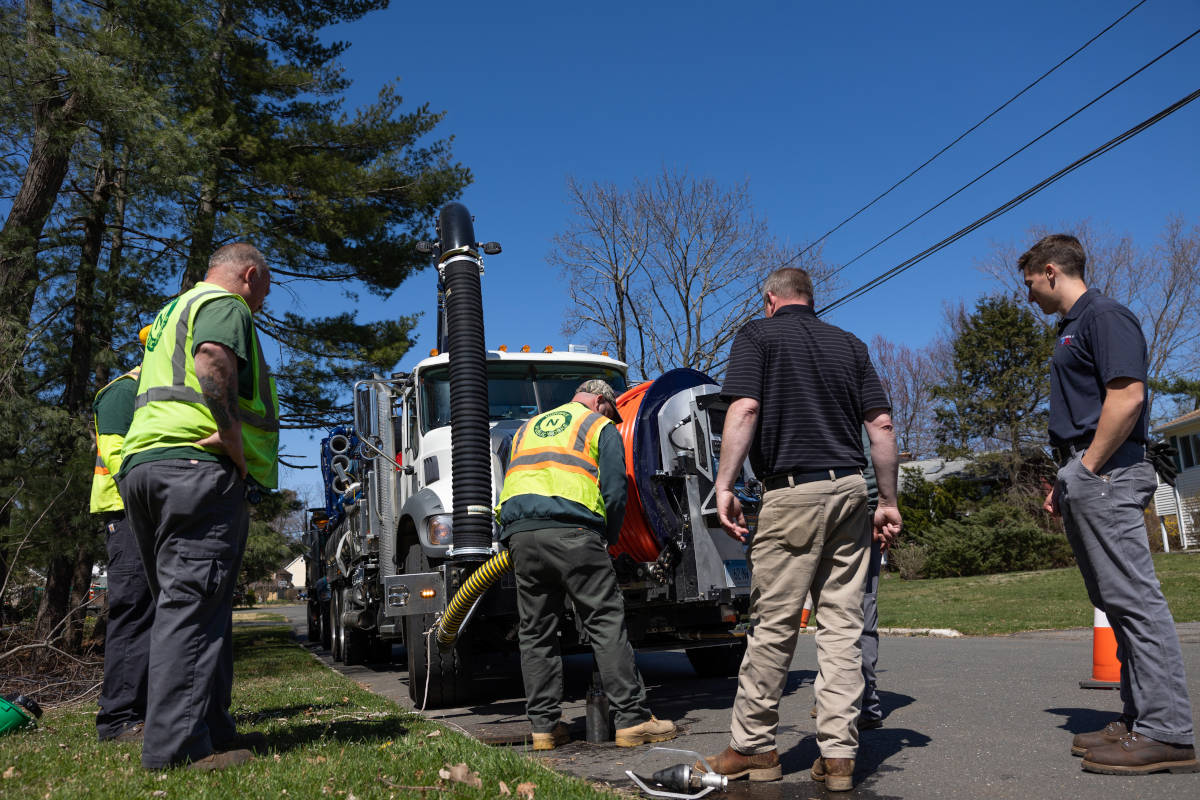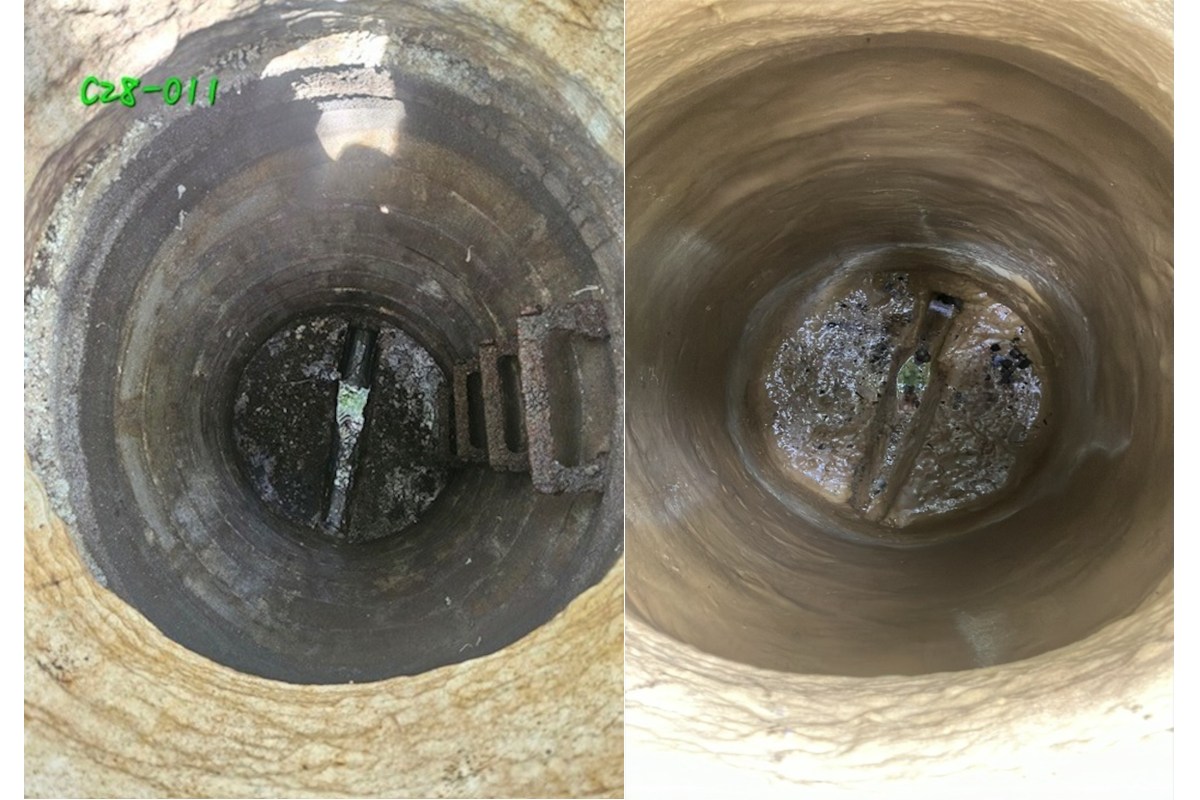
Spiral Wound Pipe Lining Projects in California
Spiral wound lining is a trenchless technology that uses continuous strips of PVC to fully restore gravity pipelines from 6 in. to more than 200 in. in diameter. This unique rehabilitation method first originated in Australia and Japan during the 1980s. Now, with four decades of installation history, spiral wound has been used to renew millions of feet of pipe in the United States and across the globe.
Spiral wound liners were first introduced into the United States in the 1990s. In California alone, more than 3 million ft of liner has been installed to date and growing. Most of the projects in California required SEKISUI’s SPR EX Liners, a tight-fitting liner solution to renew gravity pipelines between 6 to 42 in.

Why California?
The inherent, environmental attributes of the spiral wound method, which involves no heat or chemicals for pipe renewal, is an attractive feature to a state like California. As sustainable solutions become increasingly important, agencies everywhere are looking for viable alternative construction practices and materials to repair their aging gravity pipelines.
Second, spiral wound liners can typically be installed in live flow conditions without the need for by-passing, which is not only a cost savings, but it minimizes the overall construction footprint and installation times.
Additionally, spiral wound liners have passed rigorous physical property testing, such as the infamous “Pickle Jar” test, an accelerated aging test that verifies that a liner can meet a minimum 50-year design life. Spiral wound liners were first included in the 1998 Edition of “Standard Specifications for Public Works Construction” “Green Book” per section 500 Pipeline Systems Rehabilitation.
Many agencies in California, such as the City of San Diego, require that products or materials used in a sanitary sewer environment must be able to meet the requirements of this testing protocol.

Key Projects
SEKISUI spiral wound liners have been utilized by agencies throughout California. These include Los Angeles County Department of Public Works (LACDPW), the City of San Diego, and the California Department of Transportation (Caltrans) to name a few. Some key projects are as follows:
LACDPW — Sewer rehabilitation projects such as Kern Ave, Ford and Poplar in 2001 focused on the older concrete sewers, which were in East Los Angeles County. These sewers were a top priority due the age and poor condition particularly due to extensive H2S corrosion. In recent years, LACDPW projects such as Bellflower Projects 1 and 2 as well a Sewer Lining Projects 8 -13 (2012 to present), have focused on the county’s vitrified clay pipe (VCP) sewers. Typical VCP defects have included circumferential and longitudinal cracking and offsets, especially in areas of high seismic activity and earth movement. Due to these challenging site conditions, all county projects require the proposed rehabilitation to be a structural standalone liner for fully deteriorated pipe conditions. To date, more than 750,000 ft of SPR EX liners have been installed on county sewer rehabilitation projects.
City of San Diego — The City of San Diego approved spiral wound liners for its sewer rehabilitation program in 2000. This was part of an overall program to reduce sanitary sewer overflows to comply with their consent decree agreement with the U.S. EPA. Two decades later, more than 1 million feet of SPR EX liners have been installed in the city, with several projects currently under construction. Though the mandatory repairs as outlined in the EPA Consent Decree were completed in 2015, the City continues a robust rehabilitation schedule. The current CIP program is funded through 2024 with an annual goal of 40 to 45 miles of sewer to be replaced or rehabilitated per year.
Caltrans District 8 – Located in the San Bernardino Mountains, access was a challenge during this project. Located off winding Route 330, the CMP culverts to be rehabilitated were located within or near the habitats of regulated species including the Southern Rubber Boa and several nesting and migratory birds. A biologist was onsite during the entire installation process and was responsible to guarantee contractor compliance with the laws and regulations protecting said species. Since SPR EX is a mechanical, environmentally friendly solution, the rehabilitation process posed no chemical contamination threat to the sensitive area. In the end, more than 1,800 lf of 24- to 30-in. CMP was restored by SPR EX in 2018.
Back Bay Storm Drain Rehabilitation — This SPR EX project for the City of Newport Beach, California, was located within an ecological reserve. Due to the environmentally sensitive location, SPR EX was chosen to renew more than 1,000 lf of culverts ranging from 12 to 24 in. The work commenced in 2014 in which more than 20 culverts were successfully renewed in highly sensitive work areas. The biggest construction challenges involved installing liners while addressing the tidal flows. The excess flows were diverted to maintain workable flow levels, but the installation process continued under live flow. Despite these challenges, the project finished on schedule.
Orange County Sanitation District — More recently in 2020, spiral wound liners were specified by OCSD for a project located in Placentia, California, to renew 24 in. of VCP. The project was located underneath the Tustin- Orangethorpe overpass. The downstream manhole was located off the curb then continued for 250 ft running parallel to the overpass, then under the Burlington Northern – Santa Fe Railroad tracks and ROW, then terminating in an access structure located on the other side of the railroad tracks. This was an ideal application for SEKISUI’s SPR EX PVC Spiral Wound liner. Due to the pipe location and rail tracks, flow by passing could not be done. This meant the contractor had to install the liner in live flow conditions. Furthermore, the SPR EX liner for this project had to be designed to withstand Cooper E-80 loading.

More Work to Come
Spiral wound liners have been successfully utilized by agencies in California, as well as throughout the United States for two-plus decades. With the many environmental and constructability advantages, spiral wound will continue to be a viable repair solution for the state’s underground infrastructure for years to come.
Ryan Shallenberger is sales and marketing coordinator at Sekisui SPR Americas LLC.




